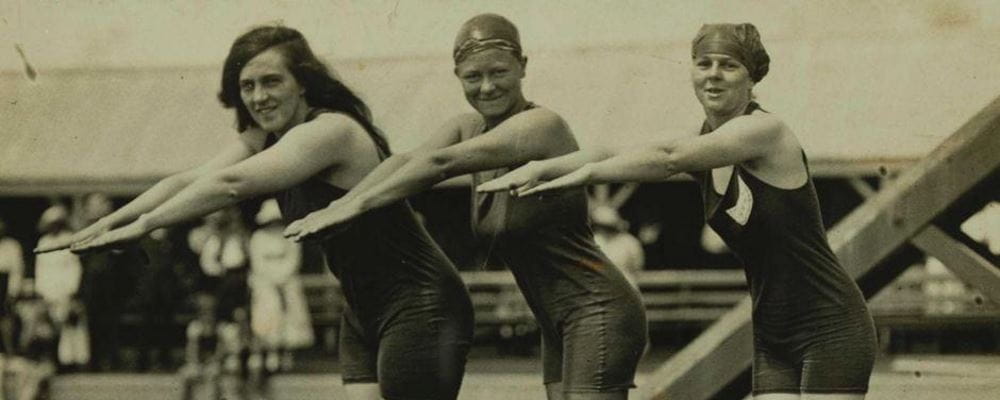
1912 Stockholm Olympics - First ever 100M women's freestyle final - Fanny Durack - Australia (Gold), Minna Wylie - Australia (Silver) and Jenny Feltcher - UK (Bronze)
Celebrating our swimming suffragettes
Though the first modern Olympics took place in 1896, it wasn’t until 1912 in Sweden that women were permitted to swim in them at all. The International Olympic Committee called it an “historic step towards gender equality”... it had been a long time coming.
The British women’s swimming team were triumphant that year, winning gold in the 4x100 metres relay, while in the first ever 100M women's freestyle final Australia's Fanny Durack took gold, and fellow Aussie Minna Wylie claimed silver! But these aquatic pioneers were expected to pay for their own costumes and training costs. For much of the 19th century, swimming was mostly the domain of men, and certainly access to pools was a luxury limited by class as well as gender.
“Women were allowed to swim in the sea, as long as no men were around, but even into the 20th century they could be arrested and fined if they dared dive into a lake,” says author Jenny Landreth who has written a “waterbiography” that reveals the debt of gratitude owed by modern women to their swimming forebears.
It wasn’t until the 1930s that women were finally - and reluctantly - granted equal access. Landreth, a keen swimmer, writes movingly of the thanks that are due to “every single swimming suffragette, every formidable swimming pioneer who broke the mould”.
But mixed beach bathing did mean ordinary women were now able to learn to swim rather than merely bobbing about with their heads above the water. The rise in popularity of sea swimming in Victorian times, combined with an increasing concern for public health had, incidentally, led to a growing support for public baths.
Gradually, women-only baths opened but there were still inequalities; the ladies’ pool that opened in Ashton-under-Lyne in 1870 was little more than “a souped-up jam jar” according to Landreth: one-ninth the size of the men’s.
By the game-changing Olympic year of 1912, the Amateur Swimming Association was pushing for more baths that could be used by both sexes at the same time. We may take for granted the fact that nowadays all are well and truly welcome to swim, whenever and wherever we like – but let’s remember the hard fought slog for equality in swimming by our swimming suffragette forebears.
Royal Life Saving Society WA is proud to be working hard to ensure all people across WA have an opportunity to learn swimming and water safety skills. Our Women's Only program is designed to break barriers that do still exist for women from some cultures, where swimming is restricted due to cultural requirements surrounding dress and modesty.
Find out more at the link below.
